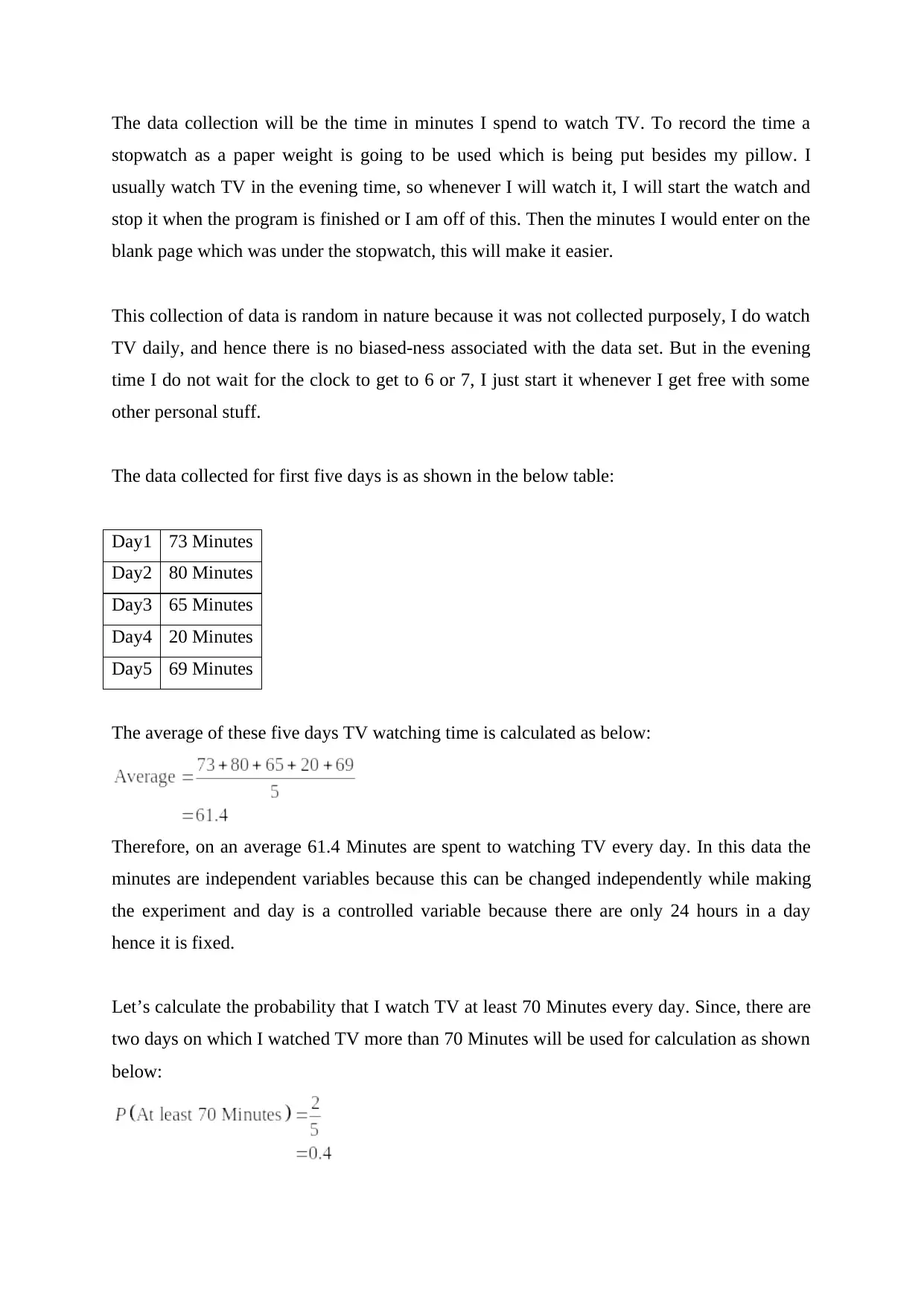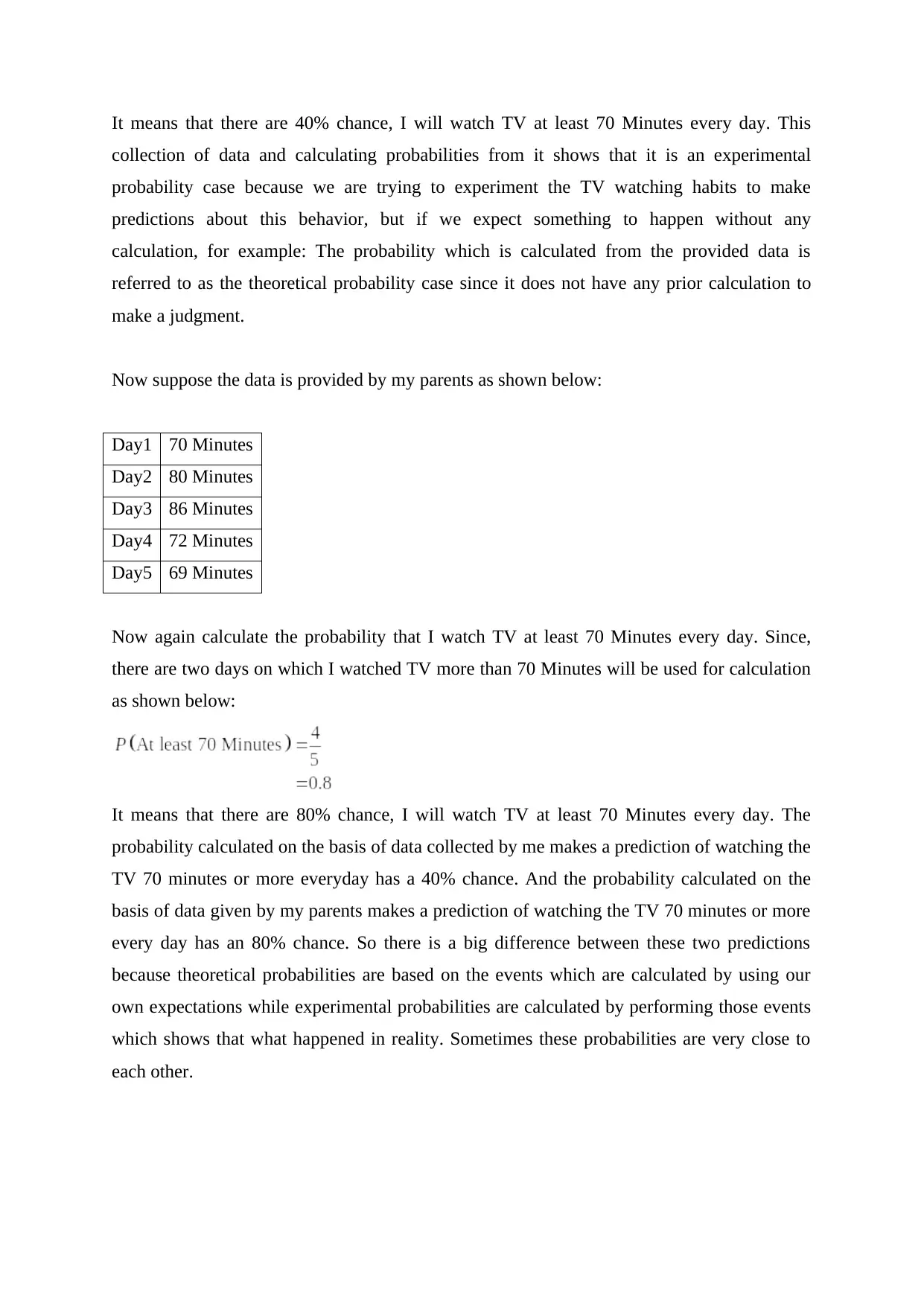Random TV Watching Time Collection
VerifiedAdded on 2019/09/23
|4
|784
|357
Report
AI Summary
The assignment involves collecting data on the time spent watching TV daily, using a stopwatch as a paperweight beside one's pillow. The data is collected randomly and does not show bias. The average time spent watching TV per day is calculated to be 61.4 minutes. The probability of watching TV for at least 70 minutes every day is also calculated, showing a 40% chance based on the student's own data collection and an 80% chance based on their parents' data collection. The importance of considering outliers and potential sources of skewness in data collection is highlighted.
Contribute Materials
Your contribution can guide someone’s learning journey. Share your
documents today.
1 out of 4
![[object Object]](/_next/static/media/star-bottom.7253800d.svg)









